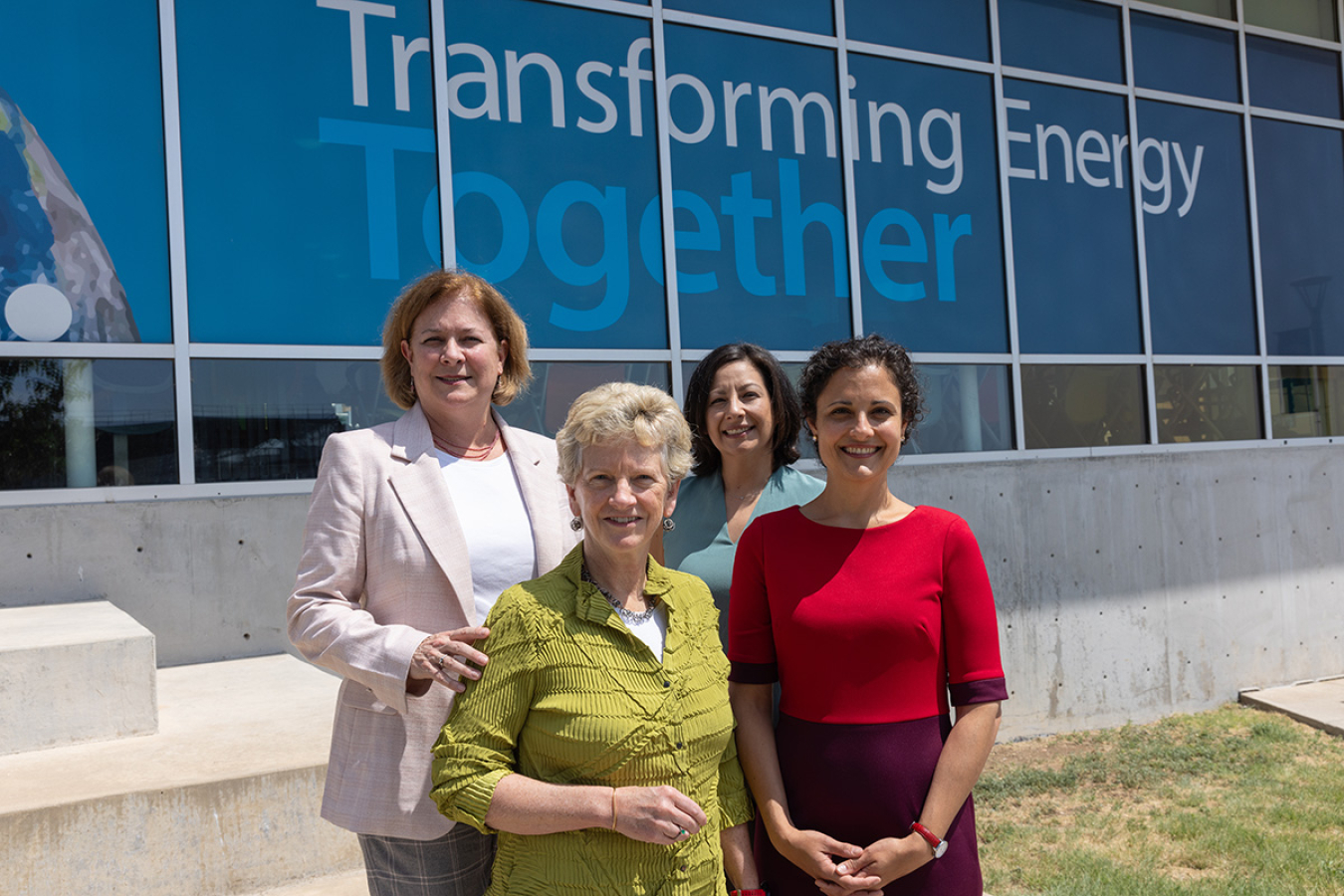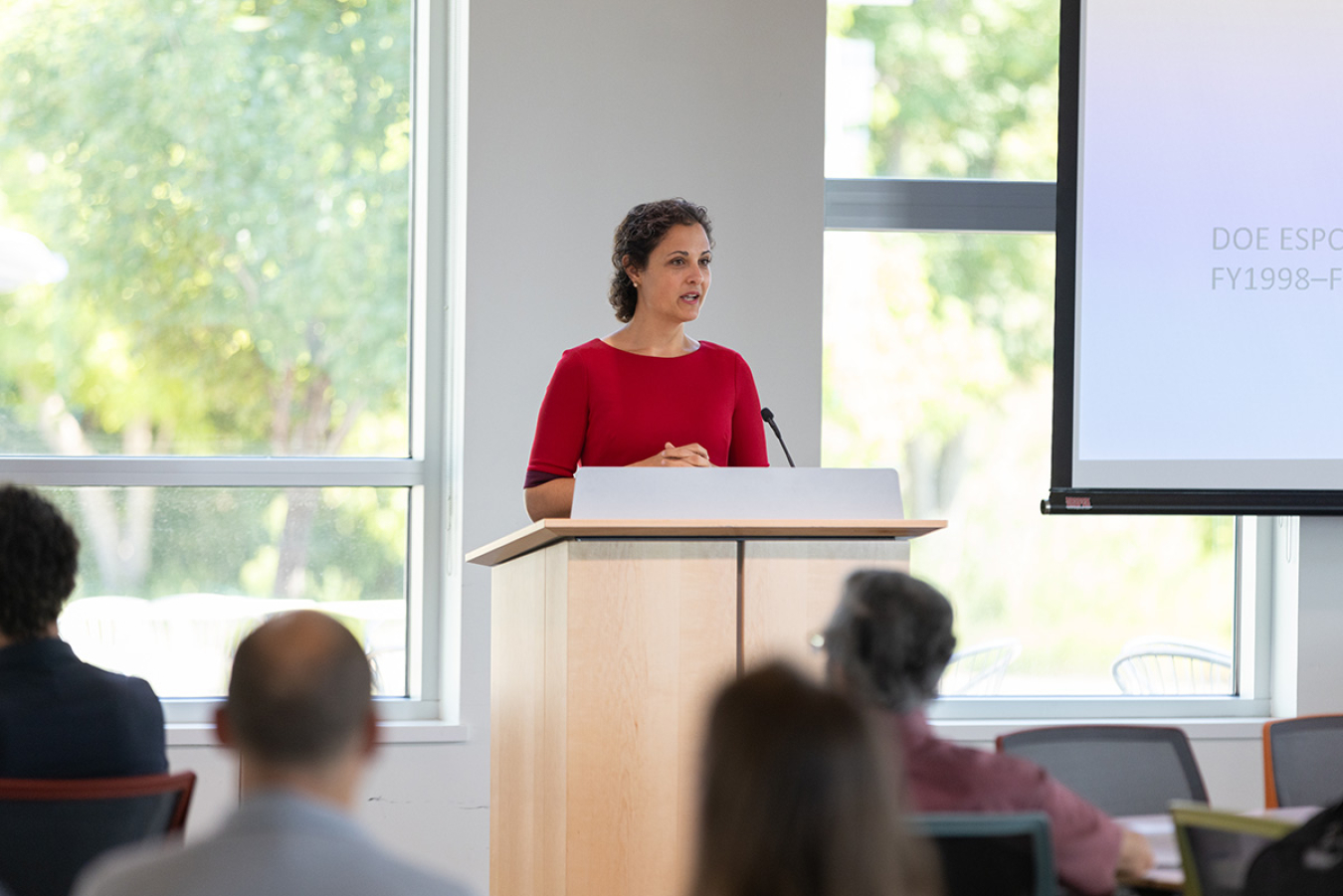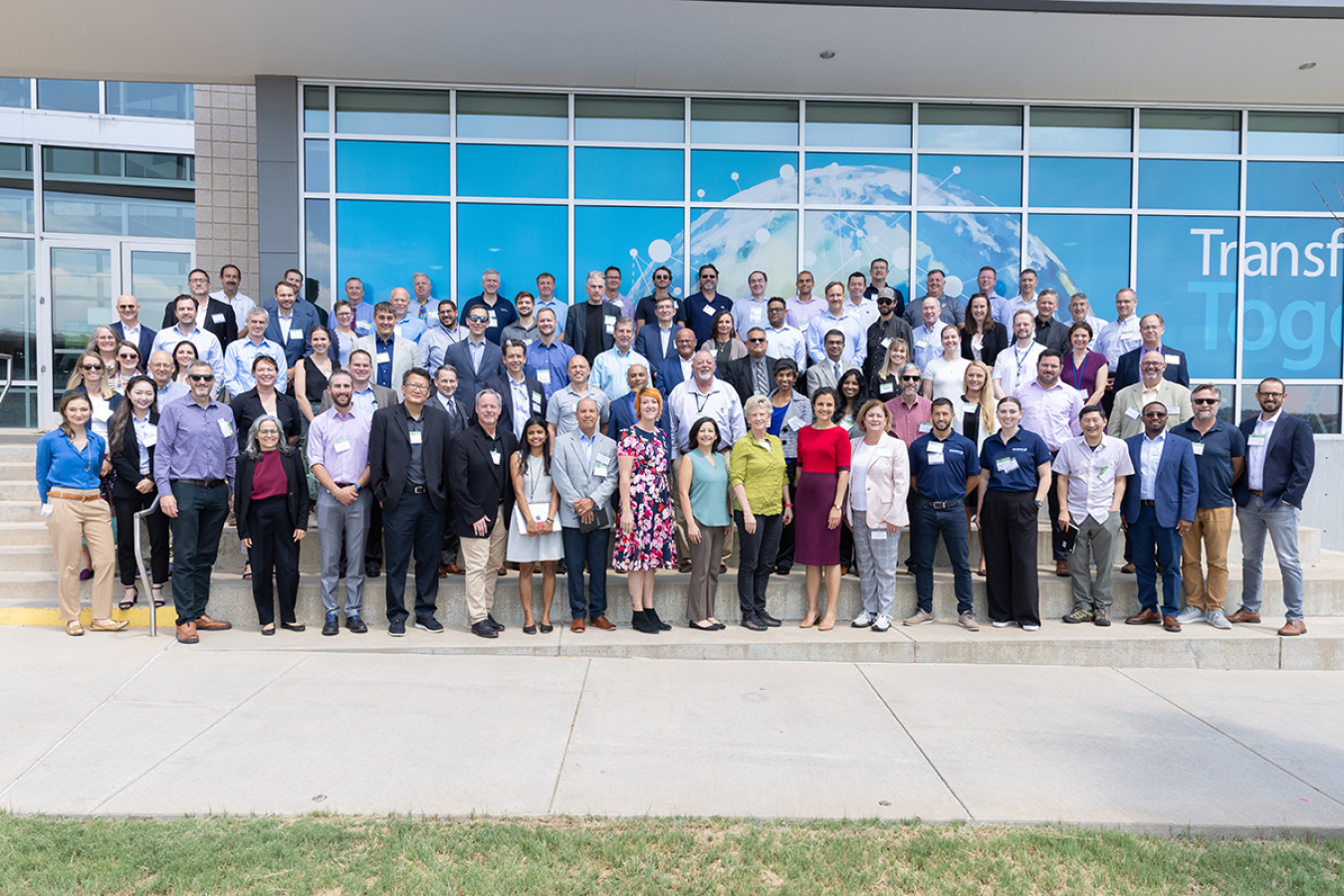The Federal Energy Management Program and the General Services Administration partnered to present the Greenovation Summit from July 17-18, 2024, at the National Renewable Energy Laboratory in Golden, Colorado.
Federal Energy Management Program
August 21, 2024
(From left) Anna J. Siefken (Federal Energy Management Program), Robin Carnahan (General Services Administration), Jetta Wong (General Services Administration), and Mary Sotos (Federal Energy Management Program) pose for a photo in front of the National Renewable Energy Laboratory café during the 2024 Greenovation Summit.
One point was crystal clear at the General Services Administration's (GSA's) first-ever Greenovation Summit: When it comes to decarbonizing GSA-managed federal buildings—the biggest real estate portfolio in the country—diverse partnerships will be crucial. Held July 17–18, 2024, at the U.S. Department of Energy's (DOE's) National Renewable Energy Laboratory (NREL), the event was designed to convene federal agencies, private businesses, and external partners as they collaborate to meet net-zero targets.
"That's why we're all here," said GSA Administrator Robin Carnahan to the 120 attendees in the room, "to build more partnerships and collaboration between GSA, DOE, the U.S. Department of Defense, and the folks creating emerging and sustainable technologies, so we can find the best ways to make these investments."
Buildings account for 40% of the federal government's energy consumption, and 30% of that energy is lost through leakage and inefficiencies. With $1 billion in Inflation Reduction Act funding earmarked for federal buildings, GSA has an opportunity to quickly accelerate technology validation and deep energy retrofits needed to address both metrics.
To make smart, impactful investments, GSA will work with a network of energy service companies (ESCOs), technology vendors, national laboratories, and—crucially—federal agency partners like DOE's Federal Energy Management Program (FEMP). FEMP has long worked with the range of federal agencies to help them meet mandated energy goals, including energy-efficiency improvements to the buildings they occupy.
"FEMP is empowering federal agencies with a playbook so they can meet statutory and agency goals as well as administration goals," said FEMP Director Mary Sotos, who was a plenary speaker at the event.

FEMP Director Mary Sotos talks during a panel at the General Services Administration's 2024 Greenovation Summit. The event aimed to increase the cost-effective uptake of emerging technologies through energy savings performance contracting.
That playbook, Sotos continued, includes providing thousands of hours of training to building and technology operators. It means optimizing and de-risking performance contracts with energy service companies (ESCOs), which have a history of enabling large cost, energy, and water savings. Through grant programs, FEMP funds building retrofits for various federal agencies—driving adoption of underused technologies like geothermal heat pumps, high-performance chillers, and photovoltaics with battery energy storage systems.
National laboratory expertise in building technologies and analysis helps FEMP develop robust building performance contracts with ESCOs, which go on to deploy commercially mature technologies in line with robust federal building efficiency requirements. For example, at the Denver Federal Center—one of GSA's Applied Innovation Learning Labs—NREL evaluated quad pane windows from Colorado-based Alpen High Performance Products. The study showed the novel technology not only dramatically increased the building efficiency but also achieved a payback period of only three years. FEMP supported the project by providing guidance on energy- and water-efficiency practices.
Sotos said the number of such high-impact projects is set to increase quickly in the next fiscal year.
"Federal agencies' performance contracts have resulted in more than $16 billion in program investments," Sotos said. "We see FY25 is projected to be a record-setting year in the value of awarded projects."

Attendees from the 2024 Greenovation Summit gather for a group photo at NREL in Golden, Colorado.
As funding ramps up, FEMP will continue providing technical and contracting resources—like guidelines and best practices—for integrating underused technologies into energy savings performance contracts. By empowering ESCOs and federal agencies in this way, FEMP will be a crucial support in the years ahead as GSA manages record investments in federal building efficiency.
"Collaboration with folks in this room will enable us to take advantage of the moment," Administrator Carnahan stressed to the room. She then leaned into the podium. "There is no time to waste. Let's get to work!"

